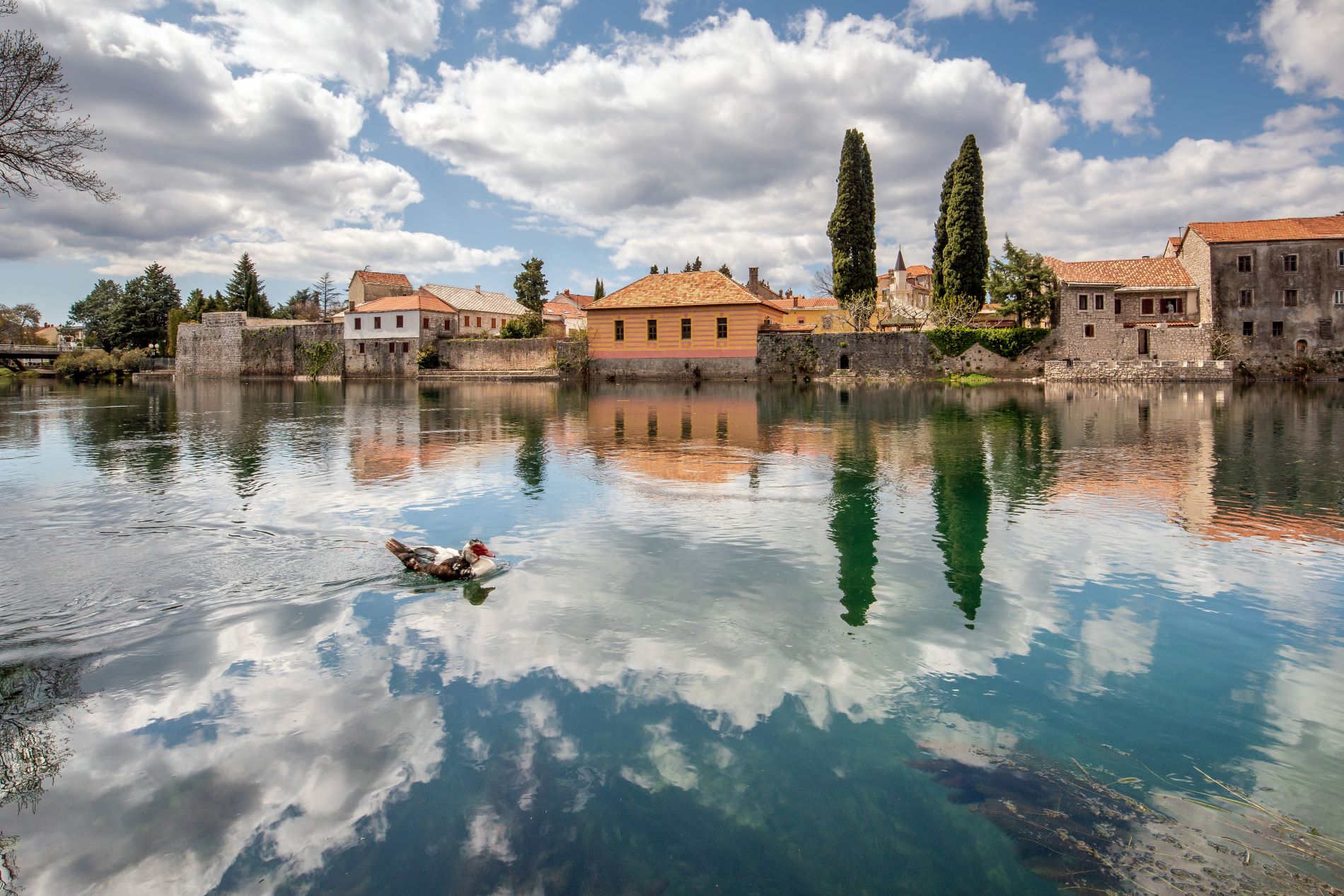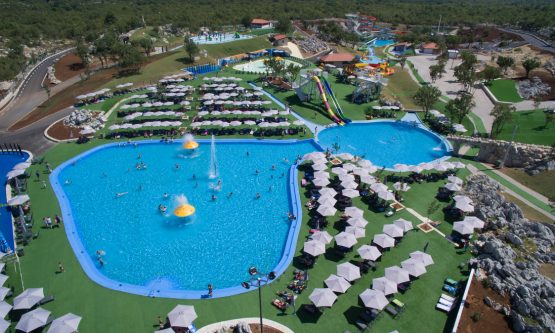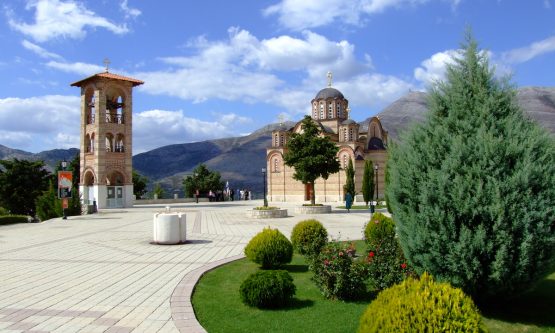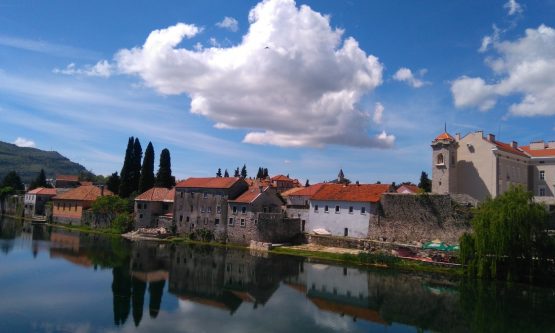Welcome to Trebinje
On the very south of Herzegovina under Leotar mountain lies Trebinje, the city of sun, wine and plane trees. It is located on the tripoint between UNESCO heritage cities – Dubrovnik (28km), Kotor (90km) and Mostar (120km). Trebinje is special for its favorable mild Mediterranean climate and 260 sunny days a year.
City center is built in the Mediterranean architecture style. It is dominated by the old Austro-Hungarian buildings and whopping plane trees with tourists enjoying their shade in summer patios. There, in the heart of the city in Ducic’s street, you can see the monument of Trebinje’s poet and ambassador, Catholic cathedral from 19th century, first Njegos monument ever, lively “green” market with the WWI monument. The city park is also nearby with a monumental Orthodox church, Cultural Center, WWII monument, fountains…
On the hill Crkvina that overlooks the city there is a gem of local tourist offer – impressive complex of Hercegovacka Gracanica. Visit Trebinje and enjoy the beauty of the southernmost city in Republic of Srpska!
Culture

There are many monuments in Trebinje that witness about the rich history, culture and tradition of the area.
One of the most notable symbols of Trebinje is Perovic (Arslanagic) bridge, the most famous monument from the Ottoman period and a very important item of the Balkan architecture of 16th century. Sokollu Mehmed Pasha built this bridge as an endowment to his dead son in 1574 during the Ottoman occupation.
Many tourists are eager to visit the Museum of Herzegovina, which has a large collection of paintings, graphics, sculptures and other items. Tourist also like walking through the Old Town which has various stores, souvenir shops, cafes and restaurants. The biggest credit for “Kastel’s” development can be given to Osman-Pasha, founder of Resulbegovic family (18th century).
Religious tourism is one of the most developed tourism categories here. There are many religious objects from various time periods in the municipality – Orthodox, Catholic and Muslim. Medieval monasteries Tvrdos, Duzi and Petar-Pavle are the keepers of faith, spirit and tradition of this area.
When the sun starts setting, the most beautiful view on Trebinje is from the Crkvina hill, where the church Hercegovacka Gracanica is placed, standing as a protector of its dear Trebinje. It is this very place that offers the most beautiful sight of Trebinje, so it is no wonder that Ducic himself wanted this location to be his eternal resting place.
Village Mrkonjici just outside of Trebinje where Orthodox Center is being built is the birthplace of St. Basil of Ostrog and Tvrdos. The Church of St. Basil of Ostrog and Tvrdos was built on his birth house foundations.
Nature

Once the biggest underground river in Europe, river Trebisnjica is a natural beauty. Together with its tributary Susica offers a great way of escaping the summer heat and enjoy in refreshment on one of their beaches. Especially attractive are the Jazina getaway and camp Usce. Also worth mentioning is Nature Park Orjen as the biggest protected area in Republic of Srpska, while in the foothill of Orjen mountain, apart from “Adventure Park”, you can spend the night or simply refresh and rest in the mountain hut.
On the hills that surround the city there are a few Austro-Hungarian fortifications, most notable of them “Strac” that is accessible via an arranged footpath. These locations offer a unique view on Trebinje and the vicinity.
The olm is the only cave-dwelling amphibian, and in Trebinje you can see it on 46 locations. The only observatory for olms is in cave Vrduljak, Trebinje municipality.
Adventure
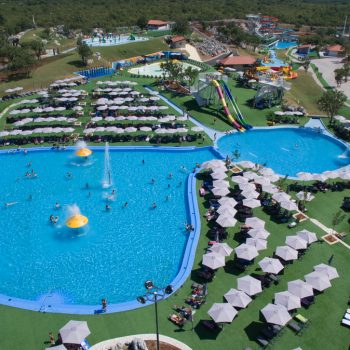
In the beautifully tame landscapes around Trebinje, every nature lover has many opportunities to explore the nature and experience an unforgettable adventure through paragliding, mountaineering, cycling, mountain biking, diving, canoeing and photo safari.
The biggest attraction here is “City of Sun”, a location that provides rest, comfort and fun. It is also home of the largest water park in the Balkans.
Tue lovers of cycling will find great conditions for that activity in Trebinje, whether it is mountain or road. In both the city and its vicinity you can enjoy in numerous other activities: diving, boat rides on Trebisnjca, visit to Adventure Park Ubla, canoeing on quiet Lastva lake waters, cycling through Popovo karst field or taking the walking-cycling path “Ciro”.
Gastro
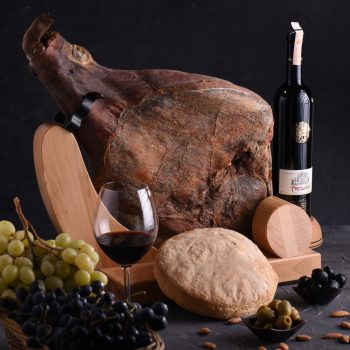
Trebinje offers various delicacies of the Herzegovinian area, which you can taste in one of the many restaurants in Trebinje, or you can visit one of the wineries and enjoy the full taste of Zilavka or Vranac. If you want to make a delicacy yourself, fell free to visit the famous Green Market, but for the best ingredients go to Herzegovina House or visit one of the village households in the municipality.
Tourist organization of Trebinje
Grad Sunca ( City of Sun)
 Created to provide top-of-the-line comfort, rest and fun, you will be thrilled the moment you see it. It is the home of the biggest water park in the Balkans, along with the luxury hotel “SL Panorama”, sports-recreation center “SL Olimp” (with swimming pool, gym, multifunctional hall, indoor and outdoor fields and courts for football, basketball, volleyball and tennis), wellness and spa center “Galija”, ethno village Varos Carsija, children’s park “Dino”, apartments “Bijeli Grad”, car camp and Colosseum.
Created to provide top-of-the-line comfort, rest and fun, you will be thrilled the moment you see it. It is the home of the biggest water park in the Balkans, along with the luxury hotel “SL Panorama”, sports-recreation center “SL Olimp” (with swimming pool, gym, multifunctional hall, indoor and outdoor fields and courts for football, basketball, volleyball and tennis), wellness and spa center “Galija”, ethno village Varos Carsija, children’s park “Dino”, apartments “Bijeli Grad”, car camp and Colosseum.
Hercegovacka Gracanica
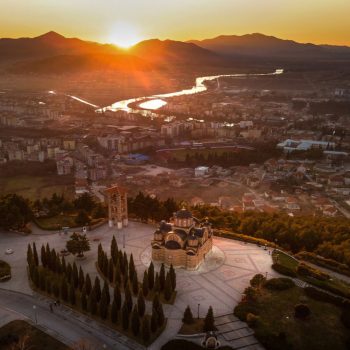
Tourist complex Hercegovacka Gracanica is the most visited religious object in East Herzegovina. Built to make Jovan Ducic’s testament wish come true, as he wanted to be buried on one of the hills that overlook Trebinje in a church that resembles “the one in Kosovo”, referring to Kosovo Gracanica, endowment of king Milutin from 1321. Poet’s tomb is on the right side of the church, with a modest inscription saying “Jovan Ducic – Poet”. The complex also has bell tower, episcopal court, amphitheater, souvenir shop and summer restaurant “Ducic’s View”. In time, Gracanica has also become a favorite place for weddings. The church itself has a fresco panting of the Wedding of Kana motif.
City market
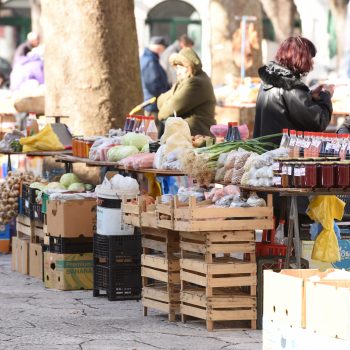
Famous Trebinje “Green Market” has been a tourist attraction for a long time now. Its unique location (Freedom Square under the plane trees) with kind merchants offers only the best and healthiest of what Herzegovina can provide. In addition, there is also a newly built indoor object right next to the market that offers various domestic products of Herzegovina area.
Monastery Tvrdos
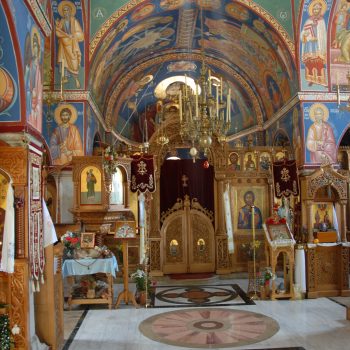
Monastery Tvrdos is located on the right Trebisnjica bank, 5km to the west of Trebinje. It was built on the foundations of a 14th century church and is considered one of the oldest cultural-historical monuments of Republic of Srpska. During 16th and 17th century the monastery was the seat of Hum-Herzegovina (Trebinje) metropolis. During Turkish war with Venice Republic the monastery was torn down, and some relics were moved to monastery Savina (Herceg Novi) and monastery Duzi. In 1992 the relic of Helen of Anjou’s (mother of Serbian kings Milutin and Dragutin) hand was brought back to Tvrdos from monastery Duzi. Tvrdos monastery is also famous for the fact that St. Basil of Ostrog had his tonsure here when was proclaimed a monk, and afterwards he spent certain time in monastery’s service. This is the reason why he is also called St. Basil of Ostrog and Tvrdos.
The monastery’s revival started in 1955 when the whole complex was renovated. Inside the church there is a special glass floor, offering a window into past where the foundations of the church from 4th century can be seen. The long tradition of wine making hailing from 15th century has been preserved until today, thanks to modern vineyards, wine cellar and winery.
Perovic (Arslanagic) bridge
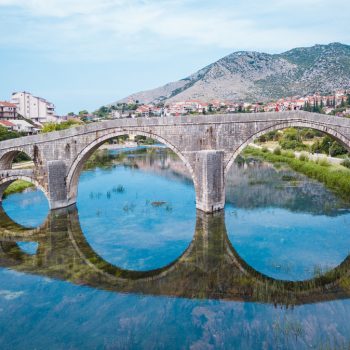
This is the most famous monument from the Ottoman period in Trebinje and has a very important place in Balkan architecture of 16th century. Sokollu Mehmed Pasha built this bridge as an endowment for his dead son in 1574 during the Ottoman war with Venice Republic. When Turks were banished from Herceg Novi in 1687, many Turkish families moved to Trebinje, and among them was a man named Osman-Aga. He got land east of Trebinje: in Zupci, Necvijece and Jasen, and the right to collect crossing fee on the Trebisnjica bridge. The bridge was named after him – Arslanagic bridge. When the hydro energy system of Trebisnjica was built in 1966, the bridge was to be flooded in the accumulation. It was decided that the bridge is moved downstream to a new location between neighborhoods Gradina and Police, on the left and right Trebinjica banks.
Wineries
 First records of Herzegovinian wines originate from Middle Ages, and the first wine shipment was transported through Trieste into Europe in 1883. The quality of Herzegovinian wines was awarded on many international wine shows. First gold medals were awarded in 1898 and 1900 in Vienna, 1901 in Paris and 1903 in London. It is interesting that Hungarians as experienced wine makers planted 12ha of vineyards in Lastva near Trebinje – Zilavka sort from Lastva of refined quality used to be shipped to Habsburg court in Vienna. Before the start of WWI, the vineyards were sold to Scepo Vujicic who continued the wine making tradition. In time, wine making became a tradition for many families in Trebinje, so in a relatively small area today we have a large number of wine makers and cellars: Acimovic, Berak, Bojanic, Vera, Vukoje, Dostic, Dracevo, Korac, Maric, Nozica, Lecic, Petijevic, Popovac, Sekulovic, Tarana and Tvrdos.
First records of Herzegovinian wines originate from Middle Ages, and the first wine shipment was transported through Trieste into Europe in 1883. The quality of Herzegovinian wines was awarded on many international wine shows. First gold medals were awarded in 1898 and 1900 in Vienna, 1901 in Paris and 1903 in London. It is interesting that Hungarians as experienced wine makers planted 12ha of vineyards in Lastva near Trebinje – Zilavka sort from Lastva of refined quality used to be shipped to Habsburg court in Vienna. Before the start of WWI, the vineyards were sold to Scepo Vujicic who continued the wine making tradition. In time, wine making became a tradition for many families in Trebinje, so in a relatively small area today we have a large number of wine makers and cellars: Acimovic, Berak, Bojanic, Vera, Vukoje, Dostic, Dracevo, Korac, Maric, Nozica, Lecic, Petijevic, Popovac, Sekulovic, Tarana and Tvrdos.
Birth place of St. Basil of Ostrog
 In the village Mrkonjici in Popovo, there is a church dedicated to St. Basil, built on the foundations of his original birth house. In the near vicinity there is Church of St. Nicholas where the saint was baptized. Next to it lies the graveyard where St. Ana rests, St. Basil’s mother.
In the village Mrkonjici in Popovo, there is a church dedicated to St. Basil, built on the foundations of his original birth house. In the near vicinity there is Church of St. Nicholas where the saint was baptized. Next to it lies the graveyard where St. Ana rests, St. Basil’s mother.


